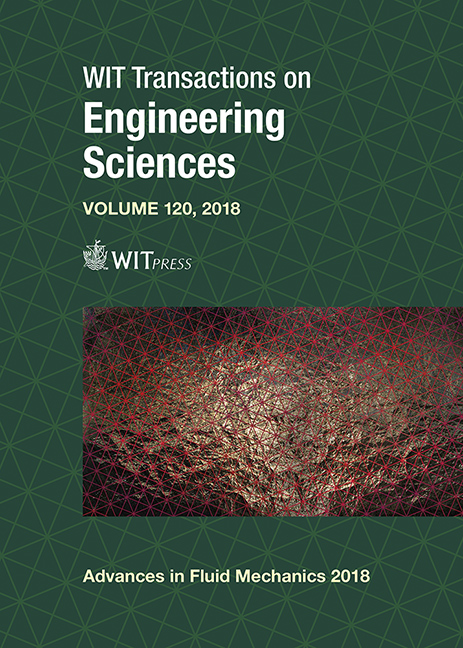SCALE-RESOLVING SIMULATION OF FLOW THROUGH A PERIODIC ARRAY OF CUBES
Price
Free (open access)
Transaction
Volume
120
Pages
12
Page Range
161 - 172
Published
2018
Size
1,098 kb
Paper DOI
10.2495/AFM180161
Copyright
WIT Press
Author(s)
MICHEL ELKHOURY, AMINA ELCHEIK
Abstract
Previous Scale-Resolving Simulation studies of flow over urban-like obstacles uses Large Eddy Simulation and course grids to reduce computational cost. However, the coarser the mesh the more reliance on the subgrid scale model to accurately account for scales associated with high wavenumbers. Furthermore, when high-resolution simulations are of importance, such as the transport of urban contaminants, mesh refinement becomes necessary. Often clustering of mesh cells produce errors at grid-refinement interfaces, mainly on the fine side of the mesh when it is located upstream of the coarse one. Three scale-resolving turbulence models, the One-Equation Scale-Adaptive Simulation (One-Eq.-SAS), the Shear Stress Transport-Improved Delayed Detached Eddy Simulation (SST-IDDES), and the Algebraic Wall-Modelled Large Eddy Simulation (WMLES) models are utilized to assess their effect on the accuracy of the results when applied on both coarse and mesh-refined grids. The selection of these models was first based on the computational cost where the WMLES is the cheapest to solve since it involves no partial differential equation, while the SST-IDDES model is computationally the most expensive. Simulations are carried out on a relevant and complex test case of flow through a periodic array of cubes. The results reveal that models that do not inherent grid scale parameters in their formulation perform best in flows with global instabilities.
Keywords
Scale-Resolving Simulation, Scale-Adaptive Simulation, One-Equation model, bluff body simulation





